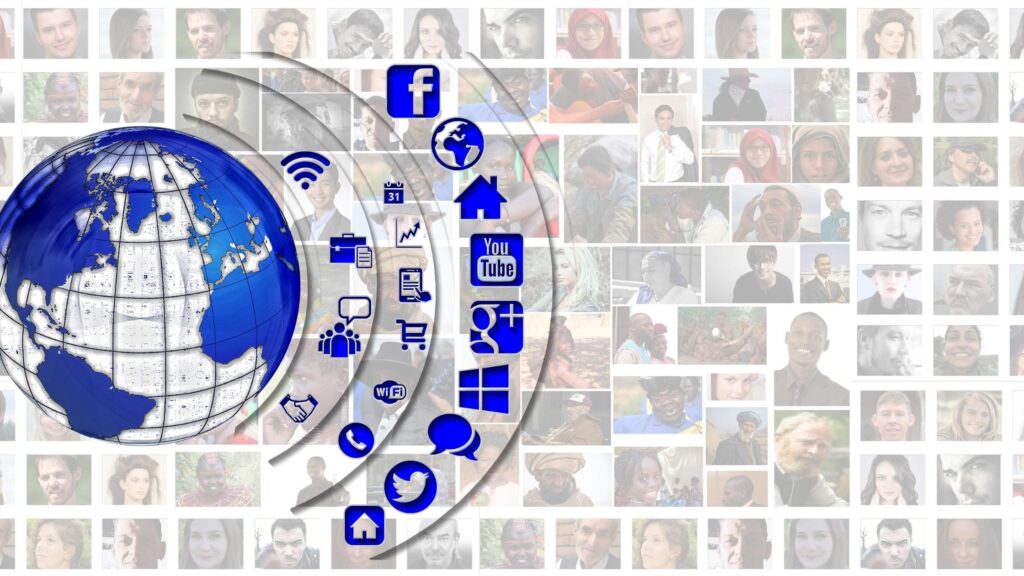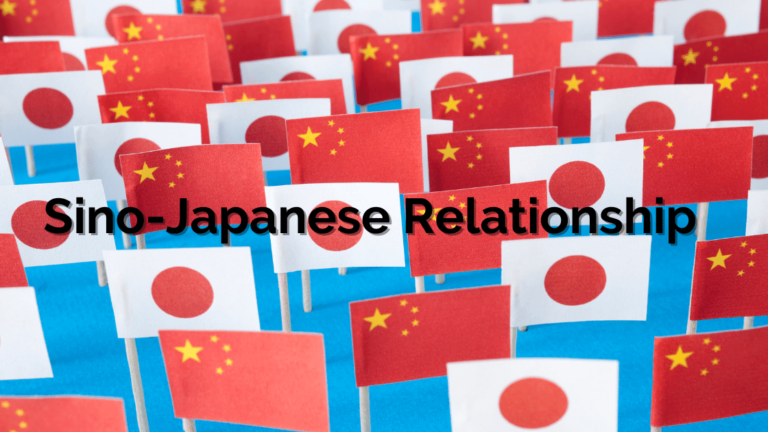Complete Social Studies Issue 3 SRQ
Issue 3 is all about the forces of globalisation on the world. It focuses on why there is globalisation before it moves on to the economic, cultural and security consequences of globalisation. You can download the pdf version of this issue in the box below.
Chapter 8.2: Driving Forces of Globalisation
(8.2.1) Developments in Transportation
(P) Developments in transportation is an important driving force of globalisation.
(E) In the 20th century, commercial jet aircraft, large ocean-going vessels and containerisation significantly increased the movement of goods and people from one place to another. The improvements in size and speed of the different mode of transportation, and the development and integrated transportation infrastructure such as airports, seaports, railways and expressways has led to increased mobility of goods and people to facilitate movement. The efficient transport network worldwide has made it possible for goods to be moved around the world easily. At the same time, it also meant that people could travel faster.
(E) With developments in transportation, it allows for a more efficient and convenient movement of items and people, allowing businesses to function at high speeds. As a result, more people and goods can be carried per trip resulting in cost savings at a lower cost; it facilitates the process through which people’s activities and ideas become more interconnected, promoting the exchange of ideas. People can also travel easily to anywhere in the world for business or leisure. As a result, these improvements allow integration and interconnectedness between different countries’ companies and cultures.
(L)Thus, developments in transportation encourage and drives globalisation.
(8.2.2) Growth of Multinational Corporations (MNCs)
(P) The growth of MNCs is an important driving force of globalisation.
(E) Multinational companies are businesses with significant economic activities in more than one country. With the growth of MNCs, they set up facilities in different parts of the world. As a result, economies become more integrated due to the economic interconnection between people and goods across the globe. These interconnections can also lead to interdependent relationships between the parties involved in the operations of MNCs, bringing about integration and driving globalisation. Besides financial benefits, MNCS also facilitates the exchange of ideas between countries, which further encourages globalisation.
(E) One example is Starbucks, which operates all over the world. Starbucks would grow their coffee beans in a few countries, roast and then deliver them to stores worldwide. Thus, the African and South American coffee farmers work with their overseas partners in the Starbucks logistics chain to bring coffee to consumers in Asia, Europe and North America.
(L) Thus, the growth of MNCs is an important driving force of globalisation.
(8.2.3) Advances in Technology
(P) Technological advancements in communication is an important driving force of globalisation.
(E) Technological advancements have resulted in greater access to the internet and the increase of mobile communications. These facilitate the communication and exchange of information from anywhere across the world. As a result, there is efficient movement of ideas and information, leading to a more interconnected and integrated world. Furthermore, businesses across the globe become interconnected due to the shrinking world as people can now purchase goods and services anywhere, and new ideas can be formulated and conveyed at a much faster rate. Hence, it sparks off a cycle that continuously encourages the rate of interconnectivity worldwide, leading to globalisation.
(E) For example, technology has enabled many individuals to own a smartphone with many applications in it. The smartphone allows people to communicate instantly and cheaply through texting, phone or video calls. People are also connecting with friends and even strangers via social media apps like Instagram and Tik Tok. In addition, businesses can sell their products all over the world via Amazon, Lazada and Taobao.
(L) Thus, advancement in technology is an important driving force of globalisation.

Chapter 9: Economic Impacts of Globalisation
(9.2) Economic Impacts on Countries
(9.2.1) Advantages
(P) The impacts of globalisation can be favourable for countries
(E) For example, the signing of Free Trade Agreements (FTAs) such as the United States-Singapore Free Trade Agreement (USSFTA) and the Trans-Pacific Partnership (TPP) has allowed for the cheaper import of goods and services from foreign countries into Singapore. It has also encouraged foreign investment and capital into Singapore, providing jobs and promoting Singapore as a regional financial haven.
(E) With globalisation, more inflow of foreign capital gives Singapore higher tax revenues as companies set up regional headquarters in Singapore. Hence, the Singaporean government can spend more money on infrastructure development and funding into various schemes that seek to improve the way of life of Singaporeans. Globalisation also aids in the effortless movement of goods and services as well as skilled personnel, facilitating business to flourish, which in turn attracts even more investment and help Singapore attain constant economic growth and prosperity
(L) Hence, globalisation can be favourable for countries.
(9.2.2) Disadvantages
(P) The economic impacts of globalisation can be detrimental for countries.
(E) For example, the 1997 Asian Financial Crisis saw many Southeast and East Asian countries suffer as their currencies devalued rapidly and foreign debt rose drastically. As a result, many investors lost confidence in the region and demand for goods and services from Southeast Asia plummeted. Singapore was plunged into a recession which depreciated Singapore’s currency and crashed Singapore’s stock market.
(E) With globalisation, the economies of various countries become interconnected. The free fluid flow of capital throughout economies worldwide makes countries more susceptible to a sudden economic downturn as every economy is connected. Hence, a drop in the demand for the goods and services of one country will spread throughout the region like a domino effect as people will have reduced confidence in the stability of trade markets, and there will be less capital exchange between economies.
(L) Hence, globalisation can be detrimental to countries.
(9.3) Economic Impacts on Companies
(9.3.1) Benefits: MNCs
(P) The economic impacts of globalisation can be favourable to MNCs.
(E) For example, Starbucks sources their coffee beans from areas with lower labour costs, such as South America and Africa. They then distribute their coffee beans to 2100 stores in more than 65 countries worldwide and make more profits because the beans were farmed in cheaper locations.
(E) The economic impact of globalisation can be favourable for large multinational corporations. They can exploit the cheaper cost of production in one country and sell their products at a markup in another wealthier country. As a result, it boosts profit margins. Also, these corporations can bring a wide array of goods worldwide for consumers to choose from, making their goods and services more appealing, increasing their sales.
(L) Hence, globalisation can be favourable towards MNCs.
(9.3.1) Benefits: SMEs
(P) The economic impacts of globalisation can be favourable towards SMEs.
(E) An example would be MMI Holdings, a local SME that supplies hard drive discs to the US-based Seagate Technology, a large MNC. The arrangement between these two companies has enabled MMI Holdings to grow and make a lot of money.
(E) The economic impacts of globalisation bring about business opportunities for SMEs. For example, many SMEs play a complementary role in MNCs by providing components, goods, and services. As MNCs earn more profits from globalisation, SMEs also benefit. They can sell these goods, services and components at higher prices, leading to better profits.
(L) Hence, globalisation can be favourable for SMEs.
(9.3.2) Disadvantages: MNCs
(P) The economic impact of globalisation can be detrimental to MNCs.
(E) For example, in 2012, French hypermarket chain, Carrefour, closed its only branch in Singapore after 15 years due to competition from other MNCs and SMEs offering similar products in Singapore.
(E) The economic impact of globalisation allowing MNCs to set up locations worldwide is that there will be more competition between MNCs. As a result, the consumer base is spread out, lowering their profit. Furthermore, having competition means that MNCs will have to upgrade to outdo one another constantly. Companies that cannot ensure that their products and services remain relevant and competitive will face lowered profits and even bankruptcy. Companies may end up having to close down and stop their operations in the country, and some may even be in debt.
(L) Hence, globalisation can lead to detrimental impacts on MNCs.
(9.3.2) Disadvantages: SMEs
(P) The economic impact of globalisation can be detrimental to SMEs.
(E) For example, the number of SMEs closing down has exceeded the number of newly formed enterprises in 2016. Enterprises such as Five Stars Tours and Banquet Food Court have been unable to anticipate changing markets and ensure their products and services remain relevant, failing to keep up with human resources and rental costs.
(E) With globalisation, more MNCs will set up locally, meaning there will be competition between MNCs and SMEs. The competition will affect the livelihood of local companies as they are unable to compete with the MNCs due to their small setup. They have a shortage of expertise, and most of their labour would likely move over to MNCs due to the better incentives. With no profit, expenses and workforce, SMEs will gradually shut down one by one.
(L) Hence, globalisation can lead to detrimental impacts for SMEs.
(9.4) Economic Impacts on Individuals
(9.4.1) Advantages
(P) The economic impacts of globalisation can be favourable to individuals.
(E) For example, individuals can travel to other countries to work for much higher pay. Some Singaporeans, for example, work in other countries like Dubai, the United States or the United Kingdom. As a result, many of them enjoy higher pay or have lifestyles that are not so stressful.
(E) Globalisation has allowed for the ease of movement of people, resulting in more chances to find work overseas. Jobs in a foreign land could be more appealing due to higher pay, a slower pace of living, higher job compatibility or the luxury to travel. In addition, individuals have more freedoms and can find better-paying jobs and seek a better way of life.
(L) Hence, the economic impact of globalisation can be favourable to individuals.
(9.4.2) Disadvantages
(P) The economic impact of globalisation can be detrimental to individuals.
(E) For example, positions may be lost when global companies close down their operations to shift to another location that offers lower labour costs or when workers cannot equip themselves with the skills required for those jobs. For example, the Japanese fashion chain Uniqlo started product operations in Shenzhen, China, because of the low labour costs. However, as China’s manufacturing and labour prices rose, Uniqlo moved out of China into Vietnam, where labour costs were half China’s.
(E) The economic impact of globalisation can be detrimental to individuals. They may find themselves out of jobs when other markets offer lower labour costs or are not equipped with the right skills. Furthermore, individuals will lose their income when they do not have jobs and thus affect their living standards as they may not meet their basic needs.
(L) Hence the economic impact of globalisation can be detrimental to individuals.
Chapter 10: Cultural Impacts of Globalisation
(10.2.1) Homogenisation in Entertainment
(P) One impact of globalisation is the domination of the local entertainment industry by a foreign culture.
(E) For example, American entertainment companies generate close to 30 per cent of worldwide entertainment revenue. American companies like Disney and Netflix provide most entertainment people view and dominate the theatres, television programmes, and the internet. It is almost impossible not to watch an American movie or television series.
(E) As a result, American culture like freedom and liberty spreads to the people watching American movies. American ideas like individuality are more important than the community is also transmitted. Hence, many youths have become more Americanised.
OR
(E) Some locals view the domination of American culture negatively. They believe that it leads to culture dilation or, worse, loss of culture. For example, many Chinese were upset when Americans made Kung Fu Panda as it misinterpreted Chinese culture. Hence, there were widespread protests in China against the movie.
(L) Hence, globalisation has bought about the dominance of a foreign culture, leading to homogenisation.
(10.2.2) Hybridisation in Entertainment
(P) One impact of globalisation is the hybridisation of the local entertainment industry between foreign and local cultures.
(E) When two cultures mix, they end up taking characteristics of both. For example, many songs end up having elements of the local and foreign culture. Many non-English popular songs include English and Western elements like jazz or hip-hop, which is already a blend of African and Western music genres. Furthermore, you can also see aspects of Japanese manga in Western cartoons and comics.
(E) When two cultures mix, they take characteristics of both as the creatives like song composers and artists experiment with styles from other cultures. The gelling of two or more cultures leads to various music, films, and television shows as creators use their creativity to blend elements from two or more cultures together.
(L) Hence, globalisation brings about hybridisation in entertainment.
(10.3.1) Homogenisation of Food
(P) One impact of globalisation is the homogenisation of food.
(E) For example, American restaurants now dominate the world. MacDonalds, KFC and Starbucks are found almost everywhere in the world. Many youths grow up eating MacDonalds, and many white-collar workers worldwide drink Starbucks coffee daily.
(E) The mass proliferation of food choices worldwide means accepting the American food culture. It means that there is something they can identify with, and thus it has created a common culture among people worldwide.
OR
(E) However, some people resent the domination of American restaurants. Italians and French believe that the American fast-food culture is destroying their traditional food heritage. As a result, some in both countries have tried boycotting American fast-food restaurants with little success.
(L) Hence, globalisation has brought about the homogenisation of food.
(10.3.1) Hybridisation of Food
(P) One impact of globalisation is the hybridisation of the food between foreign and local cultures.
(E) For example, during Hari Raya in Singapore, MacDonalds introduced Redang Beef Burger to cater to Singaporeans’ tastebuds. By incorporating Western food culture (burgers) and Malay (Redang), the variety of food increases, giving more choices to the consumers.
(E) The cultural hybridisation of food may lead to some dilution of local culture, but it is mostly positive as it retains some aspect of local culture. It also can change the foreign culture. As a result, the best elements of both cultures are maintained.
(L) Hence, globalisation has resulted in the hybridisation of food.
Chapter 11: Security Impacts of Globalisation
(11.2.2) Managing Cyber Security Challenges
(P) Governments can be effective in managing cyber security challenges.
(E) For example, the Singapore government upgraded the Cyber Watch Centre to track malicious activities and respond to security threats better. Furthermore, it established the Cyber Security Agency (CSA) to provide a centralised overview of Singapore’s national cyber security functions.
(E) As a result, Singapore’s critical infrastructure, especially in the energy and banking sectors, has its cyber security enhanced. The CSA also grew the pool of cyber security experts in Singapore through education and training. The CSA has also promoted the adoption of cyber security measures among businesses and individuals. This has led to the improvement of cyber security in Singapore.
(L) Hence, the government plays a significant role in managing cyber security.
(P) Another way to manage cyber defence is to collaborate with other countries.
(E) For example, Singapore is a founding member of the Asia Pacific Computer Emergency Response Team (APCERT). It helps to establish communication and collaboration between countries to manage cyber security. Singapore also plans the annual ASEAN CERT Incident Drill (ACID), strengthening the cyber security cooperation among ASEAN members in APCERT.
(E) Through APCERT, countries share information and skills to combat cyber security threats. The cyber security experts in all these countries also maintain a network among themselves, improving the region’s competency in responding to threats in cyber security.
(L) Hence, collaboration between countries helps defend against cyber security threats.
(P) One way of managing cyber security threats is collaboration between the government and the private sector or between private companies themselves.
(E) For example, Singapore works closely with many private cyber security companies. GovTech, the organisation responsible for cyber security matters in the public sector, collaborates with or encourages collaboration between private businesses to enhance cyber security. In 2017, Singapore worked with Huawei to partner with more than 30 private companies to develop practical cyber security solutions.
(E) By working together, cyber security experts in the public and private sector can work together to combat cyber threats. Not only will this help to build up the technology to combat cyber threats, but they can also work together to track down cybercriminals.
(L) Hence, collaboration between the public and private sectors can also defend against cyber threats.
(P) Individuals have an important role to play in cyber security.
(E) In the last few years, many successful cyber security vulnerabilities have always been traced to individual mistakes. It could be setting up a weak password, clicking on a phishing link or not installing an anti-virus.
(E) For example, in the SingHealth cyberattack. One of the frontend computers was infected with malware, which allowed hackers to gain access. Even when the staff detected suspicious activity, they did not act until too late. 1.5 million records were stolen, including PM Lee Hsien Loong’s record. This was an example of individual mistakes that allowed the computer to be infected. Subsequently, there more were individual errors that allowed the attacks to continue.
(L) Hence, individuals must play an important role in addressing cyber security threats.
(11.3.2) Managing Transnational Terrorism
(P) Preventive measures are effective in keeping Singapore safe from terrorist attacks.
(E) For example, Immigration Checkpoint Authority (ICA) in Singapore takes responsibility for fortifying our borders. One way is using biometric technology in the immigration and clearance process and radiographic image analysis of cargo vehicles crossing Singapore’s borders. As part of its commitment to safeguarding the region, Singapore collaborates with other member countries in ASEAN to fight against transnational terrorism through various platforms such as the ASEAN Counter-Terrorism Workshop, where countries exchange best practices to enhance cooperation in the region.
(E) By using preventative measures, Singapore tries to prevent terrorist acts from occurring. By regulating and monitoring border access, terrorists and potentially dangerous materials like explosives are prevented from entering Singapore. Cooperation with other countries helps authorities nullify their threat, even before these groups can commit any terrorist acts.
(L) These measures help deter terrorists and help prevent loss of lives, destruction of property and disruption to the economy and society.
(P) Protective measures are effective in managing possible terror attacks.
(E) Surveillance is enhanced for critical installations and infrastructures like power stations and public places with large numbers of people. For instance, Jurong Island, the site of Singapore’s petrochemical hub, is protected by the SAF troops, who work closely with the Singapore Police Force and Police Coast Guard, to guard the sea and land access to Jurong Island. In addition, the Navy works closely with the Police Coast Guard to patrol the Sea Line of Communication, and the Republic of the Singapore Air Force (RSAF) coordinates closely with the Civil Aviation Authority of Singapore (CAAS) to safeguard our skies.
(E) As such, this protects people and places most vulnerable to terrorist attacks. These efforts also ensure that Singapore remains vigilant in the face of potential transnational terrorist threats. At the same time, it also deters terrorists when they know that surveillance is enhanced in such places with laws and consequences in place, and they would not be so bold to carry out their attacks where their plans would likely face intervention.
(L) Thus, protective measures can keep Singapore safe from terror attacks.
(P) Should preventative and protective measures fail, responsive measures are needed to manage transnational terrorism.
(E) In Singapore, the Singapore Police Force and Singapore Civil Defence Force holds emergency preparedness exercises such as Exercise Heartbeat to help prepare for emergencies. Singapore also works with other countries such as the USA, France and Sweden on chemical, radiological and explosive (CBRE)-related research and development efforts to prepare for dangers posed by these attacks.
(E) All these help Singapore be better prepared to deal with a range of security threats. They help Singapore be more resilient and united as a community and recover quicker after an incident.
(L) Thus, responsive measures help with managing transnational terrorism.
Conclusion
You can find more information regarding Social Studies or Social Studies SRQ.
Other parts of the SRQ samples are here:
You can download a pdf of these essays below.

Critical Thought English & Humanities is your best resource for English, English Literature, Social Studies, Geography and History.
My experience, proven methodology and unique blend of technology will help your child ace their exams.
If you have any questions, please contact us!







